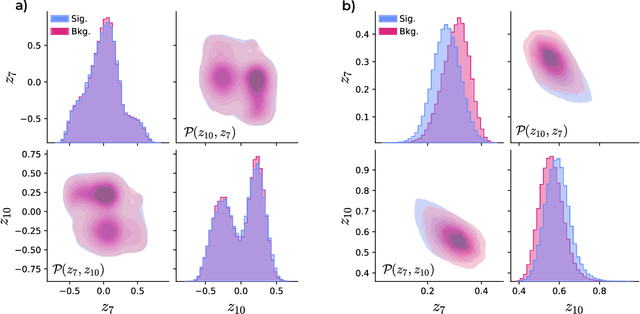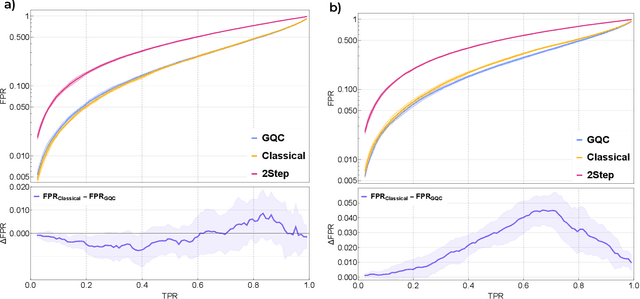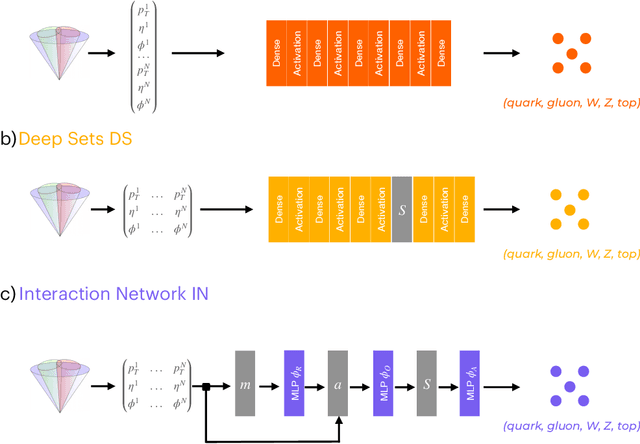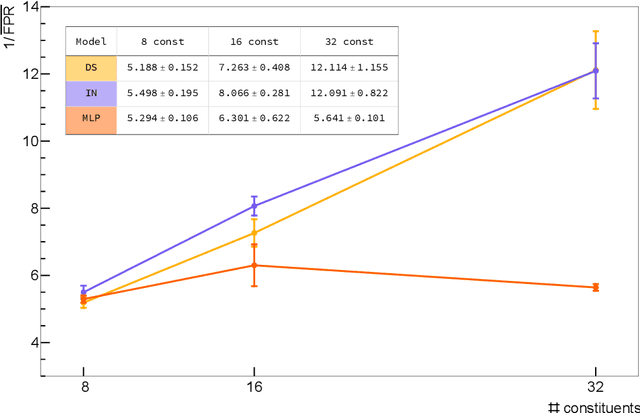Patrick Odagiu
Guided Quantum Compression for Higgs Identification
Feb 14, 2024



Abstract:Quantum machine learning provides a fundamentally novel and promising approach to analyzing data. However, many data sets are too complex for currently available quantum computers. Consequently, quantum machine learning applications conventionally resort to dimensionality reduction algorithms, e.g., auto-encoders, before passing data through the quantum models. We show that using a classical auto-encoder as an independent preprocessing step can significantly decrease the classification performance of a quantum machine learning algorithm. To ameliorate this issue, we design an architecture that unifies the preprocessing and quantum classification algorithms into a single trainable model: the guided quantum compression model. The utility of this model is demonstrated by using it to identify the Higgs boson in proton-proton collisions at the LHC, where the conventional approach proves ineffective. Conversely, the guided quantum compression model excels at solving this classification problem, achieving a good accuracy. Additionally, the model developed herein shows better performance compared to the classical benchmark when using only low-level kinematic features.
Sets are all you need: Ultrafast jet classification on FPGAs for HL-LHC
Feb 02, 2024



Abstract:We study various machine learning based algorithms for performing accurate jet flavor classification on field-programmable gate arrays and demonstrate how latency and resource consumption scale with the input size and choice of algorithm. These architectures provide an initial design for models that could be used for tagging at the CERN LHC during its high-luminosity phase. The high-luminosity upgrade will lead to a five-fold increase in its instantaneous luminosity for proton-proton collisions and, in turn, higher data volume and complexity, such as the availability of jet constituents. Through quantization-aware training and efficient hardware implementations, we show that O(100) ns inference of complex architectures such as deep sets and interaction networks is feasible at a low computational resource cost.
Machine Learning for Anomaly Detection in Particle Physics
Dec 20, 2023Abstract:The detection of out-of-distribution data points is a common task in particle physics. It is used for monitoring complex particle detectors or for identifying rare and unexpected events that may be indicative of new phenomena or physics beyond the Standard Model. Recent advances in Machine Learning for anomaly detection have encouraged the utilization of such techniques on particle physics problems. This review article provides an overview of the state-of-the-art techniques for anomaly detection in particle physics using machine learning. We discuss the challenges associated with anomaly detection in large and complex data sets, such as those produced by high-energy particle colliders, and highlight some of the successful applications of anomaly detection in particle physics experiments.
 Add to Chrome
Add to Chrome Add to Firefox
Add to Firefox Add to Edge
Add to Edge